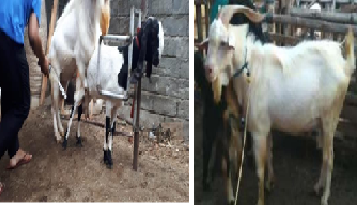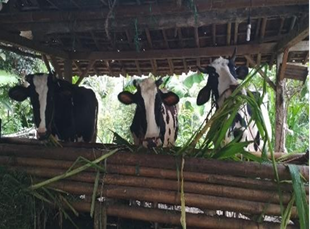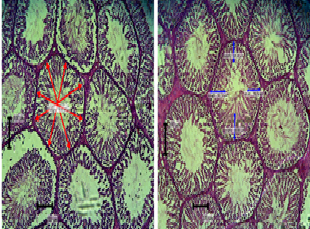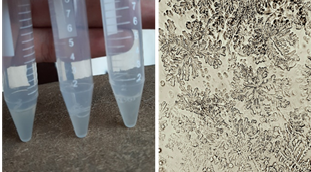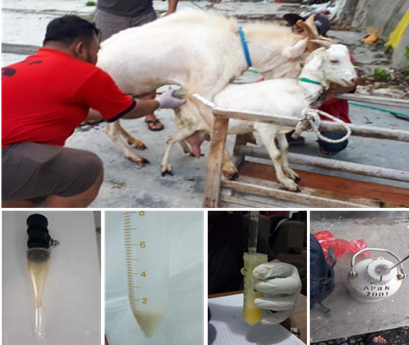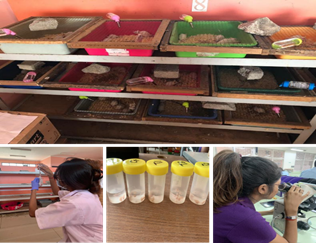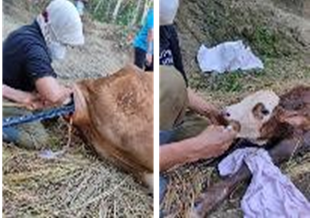PROFIL GEN RECEPTOR GROWTH HORMONE (rGH) PADA SAPI MADRASIN
Downloads
Andreas E., C. Sumantri, H. Nuraini, A. Farajallah, and A. Anggraeni. 2010. Identification of GH|Alu1 and GHR|Alu1 genes polymorphism in Indonesian Buffalo. JITAA 35:215221. Diah S. V., T. Hartatik, dan Sumadi. 2013. Polimorfisme gen growth Hormone (GH). Buletin Peternakan. 37(2): 6773. Ge, W., M. E. Davis, H. C. Hines, K. M. Irvin, and R. C. M. Simmen. 2003. Association of single nucleotide polymorphism in the growth hor-mone and growth hormone receptor genes with blood serum insulin-like growth factor I concentration and growth traits in Angus cattle. J. Anim. Sci. 81: 641648. Lelana, N.E. Sutarno dan N. Etikawati. 2003. Identifikasi Polimorfisme pada Fragmen ND-5 DNA Mitokondria Sapi Benggala dan Madura dengan Teknik PCR-RFLP. Universitas Sebelas Maret. Surakarta. 4:1-6. Misrianti R, C. Sumantri dan A. Anggraeni. 2011. Keragaman Gen Hormon Pertumbuhan Reseptor (GHR) pada Sapi Perah Friesian Holstein. Universitas Islam Negri Sultan Syarif Kasim. Riau. JITV. 16(4): 253-259. Nurgiartiningsih, V. M. A. 2010. Sistem Breeding dan Performans Hasil Persilangan Sapi Madura di Madura. Jurnal Ternak Tropika. 11(2): 74-81. Rafalski, J. A. and S.V. Tingey. 1993. Genetics diagnostics in plantbreeding - RAPDs, microsatellites and machines [Review].Trends in Genetics. 9: 275280.
Suryana. 2009. Pengembangan Usaha Ternak Sapi Potong Berorientasi Agribisnis dengan Pola Kemitraan. Jurnal Litbang Pertanian, 28(1): 29-37. Utomo budi. 2016. Mutasi Genetik Dan Penghapusan Di Sapi Madura Sebagai Hasil Persilangan. Universitas Airlangga. Surabaya. 2. Wijono, D.B dan S Bambang. 2004. Potensi dan Keragaman Sumber Daya Genetik Sapi Madura. Lokakarya Nasional Sapi Potong dan Balai Penelitian Ternak. Pasuruan. Bogor. 14142. Jakaria, Z. dan RR. Noor. 2010. Identifikasi keragaman genetik gen reseptor. Hormone partumbuhan (GHR|Alu1) pada sapi Bali. Med-Peternakan 33: 81-87.
Ovozoa by Unair is licensed under a Creative Commons Attribution-ShareAlike 4.0 International License.
1. The journal allows the author to hold the copyright of the article without restrictions.
2. The journal allows the author(s) to retain publishing rights without restrictions
3. The legal formal aspect of journal publication accessibility refers to Creative Commons Attribution Share-Alike (CC BY-SA).
4. The Creative Commons Attribution Share-Alike (CC BY-SA) license allows re-distribution and re-use of a licensed work on the conditions that the creator is appropriately credited and that any derivative work is made available under "the same, similar or a compatible license”. Other than the conditions mentioned above, the editorial board is not responsible for copyright violation.





























